In 1971, the Troubles in Belfast and the rest of Northern Ireland were in full cry.
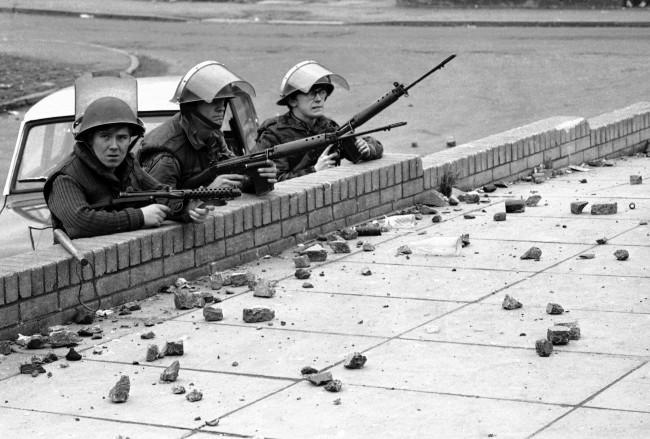
Three British soldiers, two armed with automatic rifles, and man at left with a Stirling sub-machinegun, shelter behind a wall in the Andersonstown area of Belfast, Northern Ireland on Nov. 1, 1971, during riots which followed the shooting of two policemen. (AP Photo/Peter Kemp)
TIMELINE
10 January 1971 – Members of the Irish Republican Army (IRA) carried out an early form of ‘punishment attack’ by tarring and feathering four men who were accused of criminal activities in Catholic areas of Belfast. [‘Punishment beatings’, and ‘punishment shootings’ (were people were shot in the knee or elsewhere on the body with intent to wound but not kill) were to become a continuous feature of the conflict in Northern Ireland and were used by both Republican and Loyalist
13 January 1971 – Riots began in the Ballymurphy area of Belfast.
15 January 1971 – Riots broke out in the Ardoyne area of Belfast.
17 January 1971 – At an Ard Fheis (party conference) in Dublin the Official Sinn Féin ended the 65 year abstentionist policy and agreed that any elected representative could take their seat at the Dáil, Stormont or Westminster parliaments. It was this issue that caused the split between the Official and Provisional movement in Republicanism.

Small children drawing pro Irish Republican Army notes with chalk on the pavement, such as Up the IRA, in Leeson Street in Belfast, Northern Ireland on August 17, 1971. (AP Photo/Peter Kemp)
6 February: Robert Curtis is shot dead by the IRA. He is the first British soldier to die in the Troubles. Bernard Watt (28), a Catholic civilian, was shot and killed by the British Army (BA) during street disturbances in Ardoyne, Belfast. James Saunders (22), a member of the IRA, is shot dead by the British Army during a gun battle near the Oldpark Road, Belfast.
9 February 1971 – Five men, two of them British Broadcasting Corporation (BBC) engineers, the others construction workers, were killed near a BBC transmitter on Brougher Mountain, County Tyrone in a land mine attack carried out by the Irish Republican Army (IRA). [It was believed that a British Army (BA) mobile patrol, which had been visiting the site, was the intended target.]
26 February 1971 – Two Royal Ulster Constabulary (RUC) officers, Cecil Patterson (45) and Robert Buckley (30), were shot and killed by the Irish Republican Army (IRA) while on a mobile patrol in the Ardoyne area of Belfast.
28 February 1971 – A British soldier died in Derry as a result of inhaling chemicals from fire extinguisers that were used to put out a fire inside the vehicle he was travelling in. The vehicle had been attacked with petrol bombs.
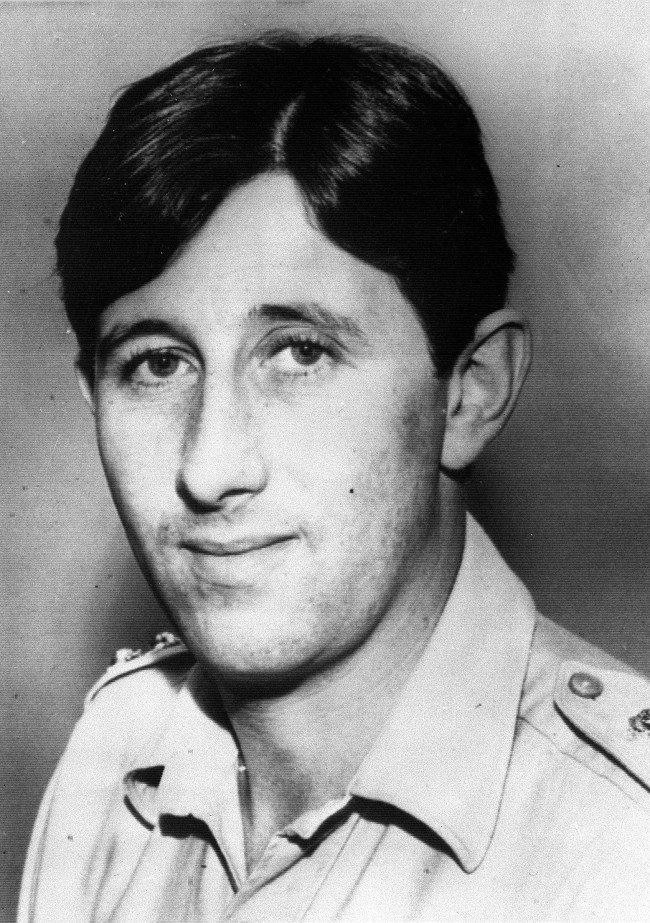
Captain David Stewardson, 29,who was a Royal Army Ordnance Corps Disposal expert died in a Belfast hospital of bomb blast wounds after a booby trap bomb he was defusing exploded.
Date: 09/09/1971
8 March 1971 – Members of the Official Irish Republican Army (OIRA) engaged in a gun battle with members of the Provisional IRA (PIRA). One man was killed. The feud between the two wings of the IRA had been developing ever since the Republic movement split on 11 January 1970.
9 March – Three off-duty Scottish soldiers – John McCraig 17 (L) his brother Joseph, 18 (R) and Dougald McCaughy,23 – are killed by the IRA. In Scotland, 4000 shipyard workers march. They want internment.
23 March – Brian Faulkner is Prime Minister of Northern Ireland.
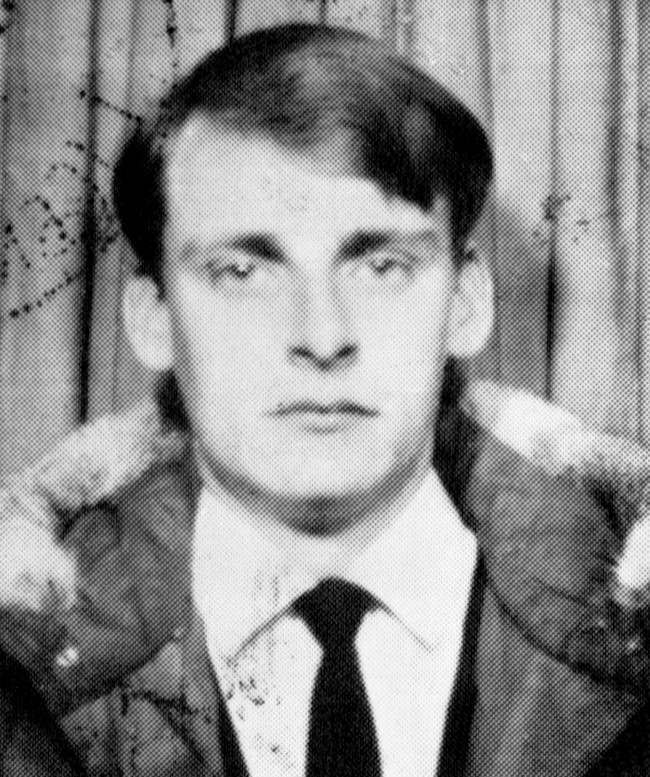
BEST QUALITY AVAILABLE Michael McClarnon,22, wearing the coat he was wearing when he was shot in Belfast’s Ardoyne district.
Date: 29/10/1971

BELFAST IRA CLASHES – British troops take up positions in the doorways of shops near Eliza street, in the markets area of Belfast, a short distance from the city centre of Northern Irelands capital. Area was the scene of continued bitter fighting as British forces clashed with elements of the Irish Republican Army provisional wing. (AP-Photo/Peter Kemp) 08/17/1971
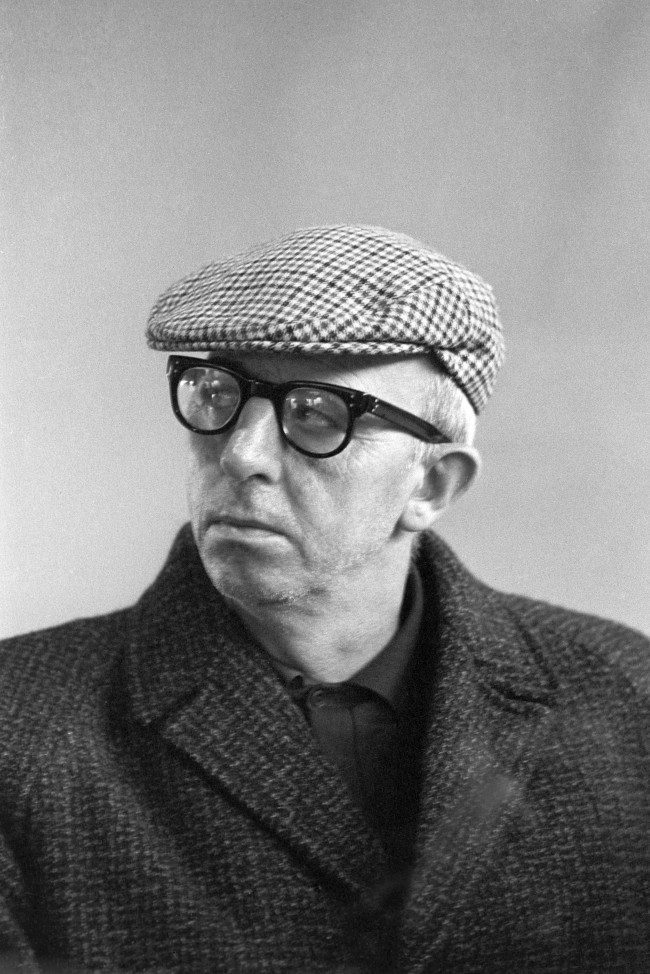
Joe Cahill, chief of the Provisionals in Belfast, at a Press conference held in a school gymnasium in Belfast’s Ballymurphy district and is attended by several leading members of the Republican movement, who heard an anonymous spokesman of the IRA deny the Army’s claims of virtual victory.
Date: 13/08/1971
15 May 1971 – William ‘Billy’ Reid, an IRA member, was shot dead by British soldiers in Belfast. [According to ‘Lost Lives’ Reid was the person who fired the shot which killed Robert Curtis, the first British soldier to be killed in ‘the Troubles’, on 6 February 1971. Reid is reported as having been killed on Curtis Street near the centre of Belfast.]
25 May – The PIRA throw a bomb into the Springfield Road British Army/RUC base in Belfast. British Army Sergeant Michael Willetts is killed. The bomb wounds: seven RUC officers, two British soldiers and eighteen civilians.
8 July – British soldiers shoot dead two Catholic civilians in Free Derry. The SDLP withdrew from Stormont in protest. Riots erupt.
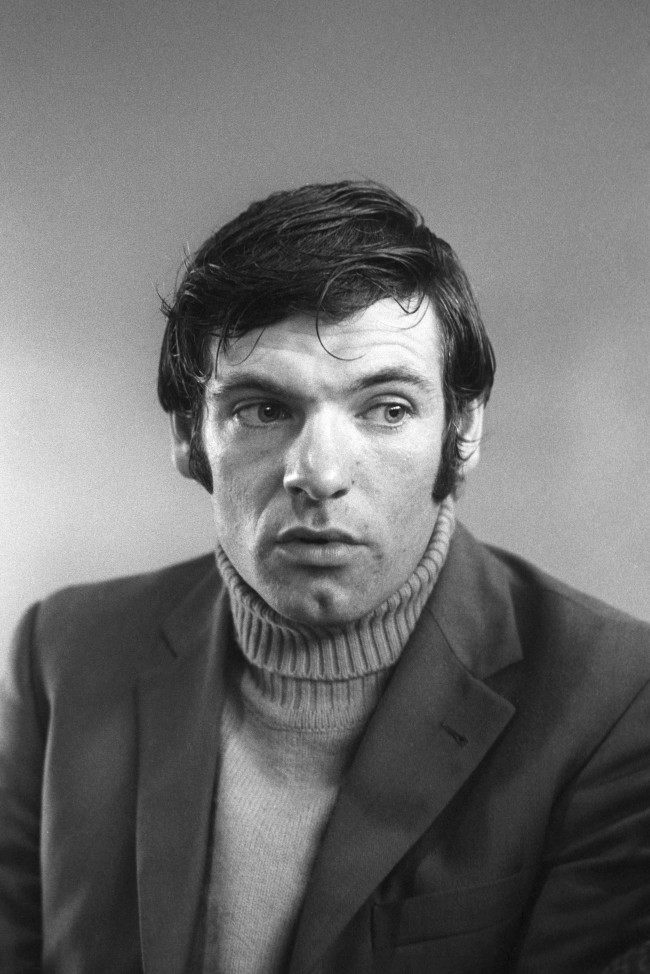
Eugene McKenna, at a Press conference held in a school gymnasium in Belfast’s Ballymurphy district and is attended by several leading members of the Republican movement, who heard an anonymous spokesman of the IRA deny the Army’s claims of virtual victory.
Date: 13/08/1971
9 August – Operation Demetrius (or Internment) was introduced in Northern Ireland. The security forces arrested 342 people suspected of supporting paramilitaries.
The BBC:
In a statement made at 1115 BST today, Mr Faulkner said Northern Ireland was “quite simply at war with the terrorist.”
He said: “The terrorists’ campaign continues at an unacceptable level and I have had to conclude that the ordinary law cannot deal comprehensively or quickly enough with such ruthless violence.
“I have therefore decided… to exercise where necessary the powers of detention and internment vested in me as Minister of Home Affairs.”
He said the decision had been made to protect life and property and the main target would be members of the Irish Republican Army (IRA).
The act has been described as one of the most powerful anti-terrorist measures on the statute books of any Western democracy but Mr Faulkner said he could not give any guarantees it would bring an end to the campaign.
Suspects who are arrested under the new law, and who are not charged or released within 48 hours, will be taken to reception areas where they will be held indefinitely without trial.
9–11 August – fourteen civilians were shot dead by the British Army, and three security forces personnel were shot dead by republicans. In the following days, an estimated 7000 people fled their homes. The vast majority of the dead, imprisoned and refugees were nationalists and Catholics.
* In a series of raids across Northern Ireland, 342 people were arrested and taken to makeshift camps as Internment was re-introduced in Northern Ireland. There was an immediate upsurge of violence and 17 people were killed during the next 48 hours. Of these 10 were Catholic civilians who were shot dead by the British Army (BA).
Hugh Mullan (38) was the first Catholic priest to be killed in the conflict when he was shot dead by the British Army as he was giving the last rites to a wounded man.
Winston Donnell (22) became the first Ulster Defence Regiment (UDR) solider to die in ‘the Troubles’ when he was shot by the Irish Republican Army (IRA) near Clady, County Tyrone.
[There were more arrests in the following days and months. Internment was to continue until 5 December 1975. During that time 1,981 people were detained; 1,874 were Catholic / Republican, while 107 were Protestant / Loyalist. Internment had been proposed by Unionist politicians as the solution to the security situation in Northern Ireland but was to lead to a very high level of violence over the next few years and to increased support for the IRA.
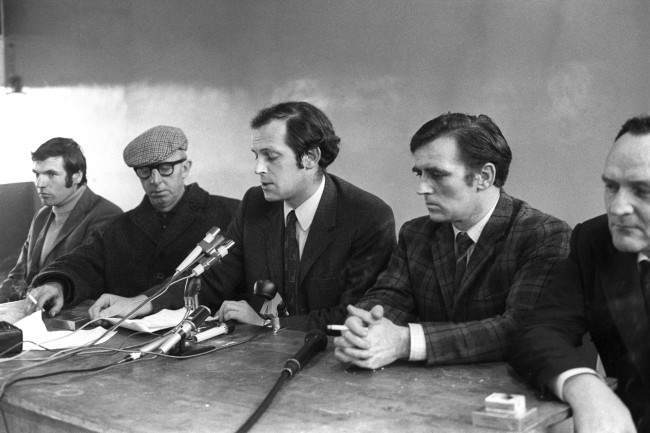
Joe Cahill (centre) school gym Ballymurphy northern ireland speaking talking, chief of the Provisionals in Belfast, who during today’s Press conference refuted claims made by the army a few hours earlier that the IRA were virtually beaten. He said the Provisionals and the Regular IRA were now joining forces to fight the Army. His Press conference ended abruptly when guards posted on nearby street corners warned of approaching British Army patrols.
Date: 13/08/1971
The introduction of the new measures and the secret dawn raids sparked fierce gun battles and protests in Ulster which claimed the lives of 12 people, including two women.
Protestants in the Ardoyne area of Belfast, which is predominantly Catholic, fled after setting fire to their own homes to make sure they were not taken over by Catholics.
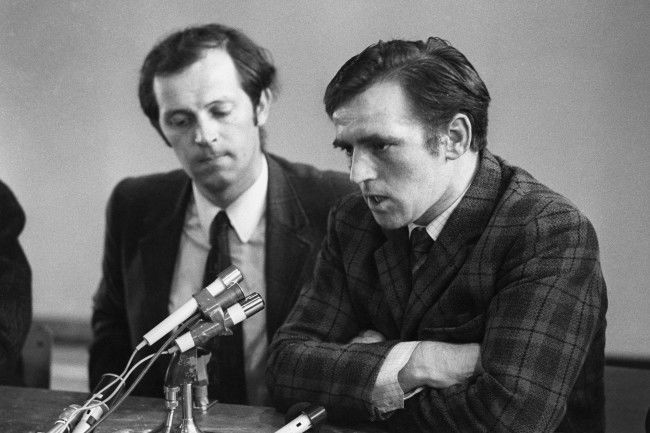
Paddy Kennedy (l), a Republican MP at Stormont, and John Kelly during a Press conference held in a school gymnasium in Belfast’s Ballymurphy district and is attended by several leading members of the Republican movement. The conference – during which an anonymous spokesman of the IRA denied the Army’s claims of virtual victory – was arranged by Mr Kennedy, who does not claim IRA membership.

John Flanagan, speaking at a Press conference held in a school gymnasium in Belfast’s Ballymurphy district and is attended by several leading members of the Republican movement, who heard an anonymous spokesman of the IRA deny the Army’s claims of virtual victory.
Date: 13/08/1971
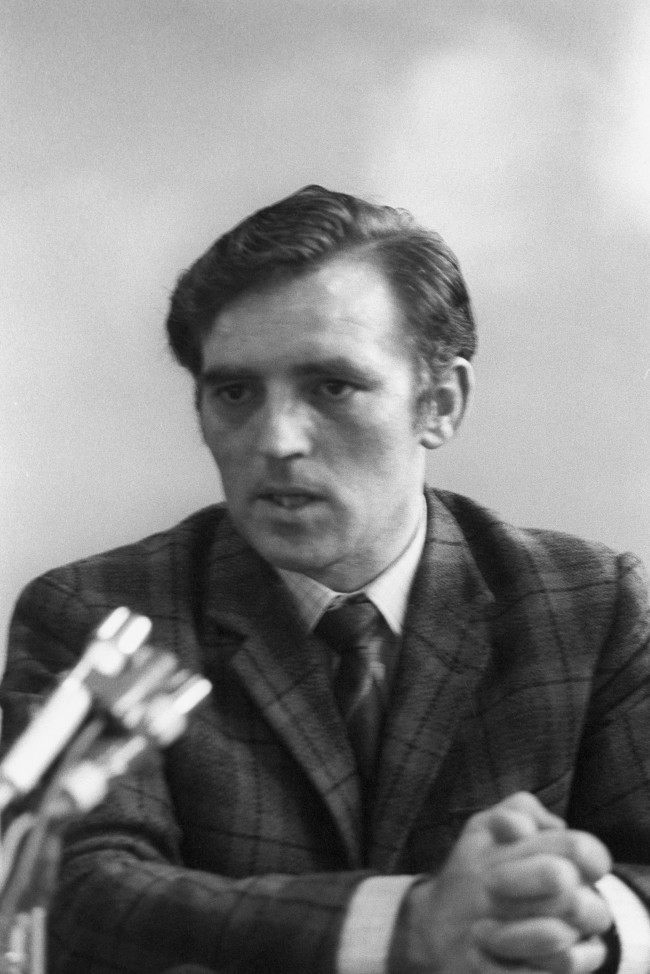
John Kelly, speaking at a Press conference held in a school gymnasium in Belfast’s Ballymurphy district and is attended by several leading members of the Republican movement, who heard an anonymous spokesman of the IRA deny the Army’s claims of virtual victory.
Date: 13/08/1971
September – Loyalist groups formed the Ulster Defence Association (UDA). The group would quickly become the largest loyalist group in Northern Ireland.
4 December – McGurk’s Bar bombing – the UVF exploded a bomb at a Catholic-oned pub in Belfast, killing fifteen Catholic civilians and wounding seventeen others. This was the highest death toll from a single incident in Belfast during the Troubles.
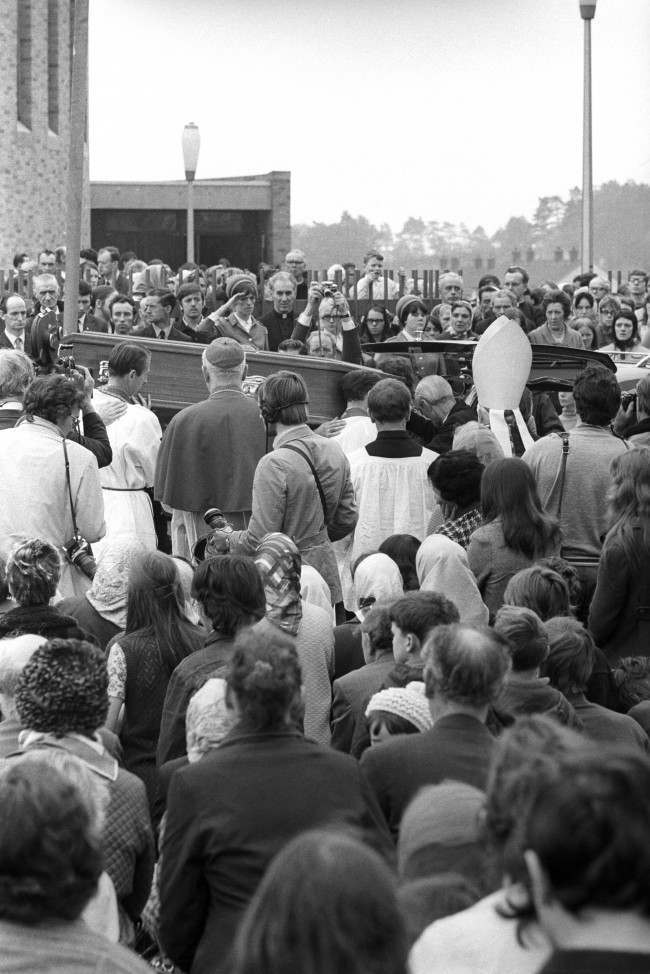
People of Ballymurphy estate pay their respects to Reverend Hugh Mullan as his coffin leaves Corpus Christi Roman Catholic Church after Requiem Mass. Father Hugh, 37, was killed during Monday night’s bloodbath in Belfast, which occurred after the announcement of internment of terrorists, after attempting to give last rites to a wounded parishioner. He was curate of St John’s in Falls Road and he will be buried in his home town of Portaferry in County Down, Northern Ireland

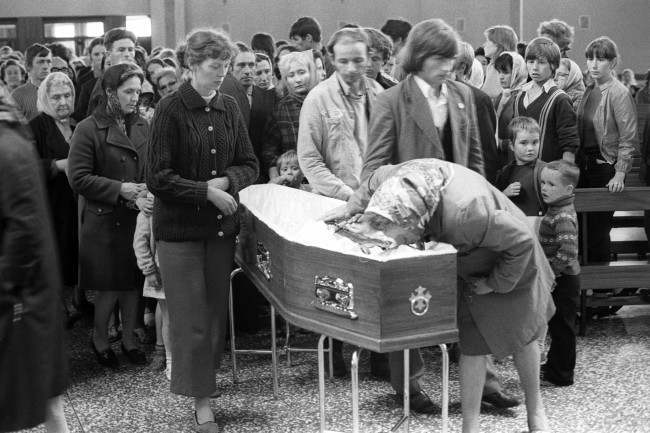
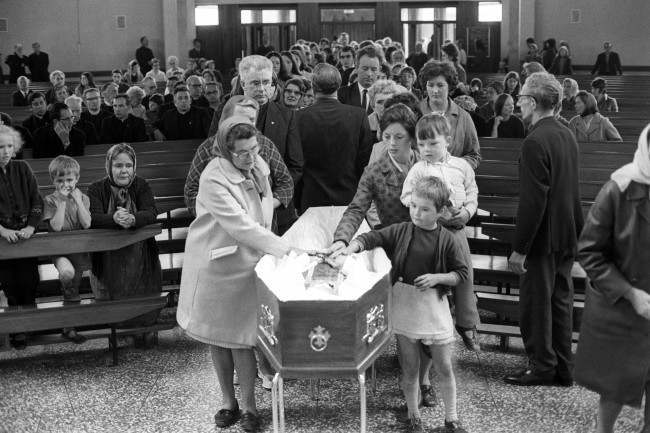
Mourners file past the coffin of Father Hugh Mullan, at Corpus Christi Roman Catholic Church on the Ballymurphy estate after Requiem Mass. Father Hugh, 37, was killed during Monday night’s bloodbath in Belfast, which occurred after the announcement of internment of terrorists, after attempting to give last rites to a wounded parishioner. He was curate of St John’s in Falls Road and he will be buried in his home town of Portaferry in County Down, Northern Ireland.
Date: 11/08/1971
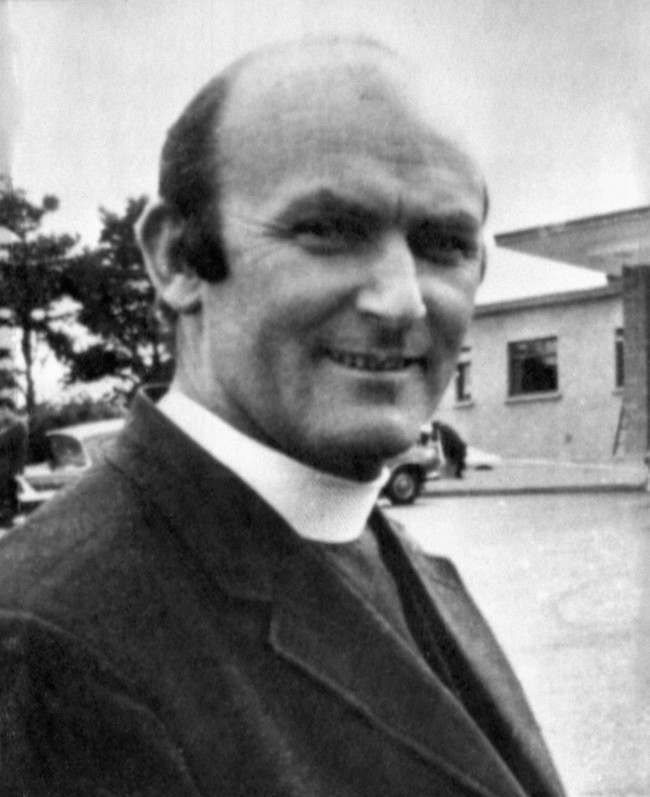
Father Hugh Mullan, 40, of St John’s Presbytery, Falls Road, the priest who was shot and killed when administering the last rites to a casualty in riots near the Ballymurphy estate earlier today.
Date: 10/08/1971
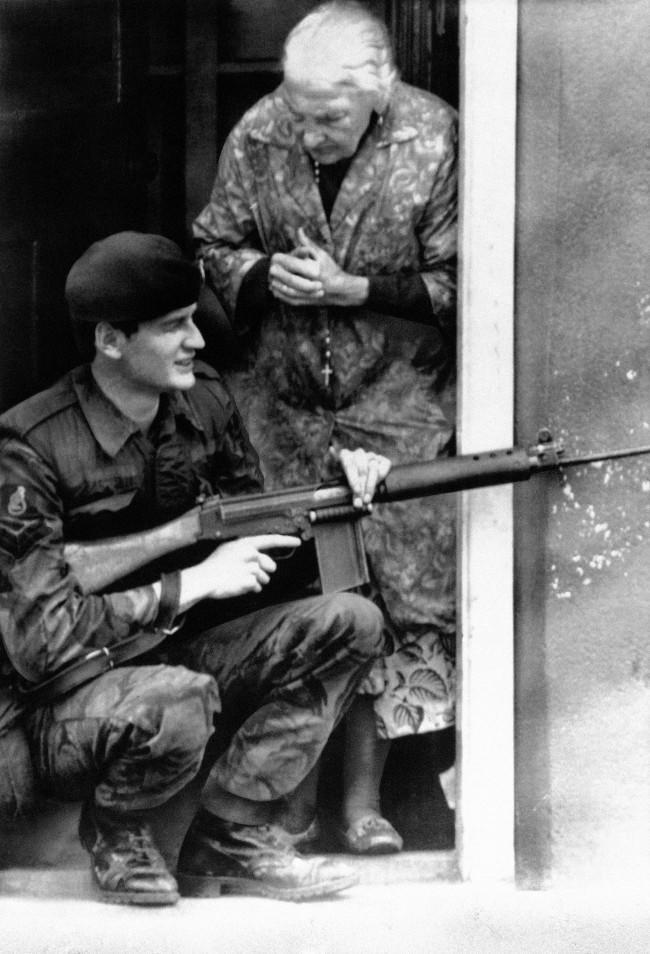
An old woman, a rosary dangling from her neck, clasps her hands on finding a British Army sharpshooter on her door step in BelfastÂs market area as troops flushed out snipers barricaded in bakery in Northern Ireland capital on August 11, 1971. (AP Photo)
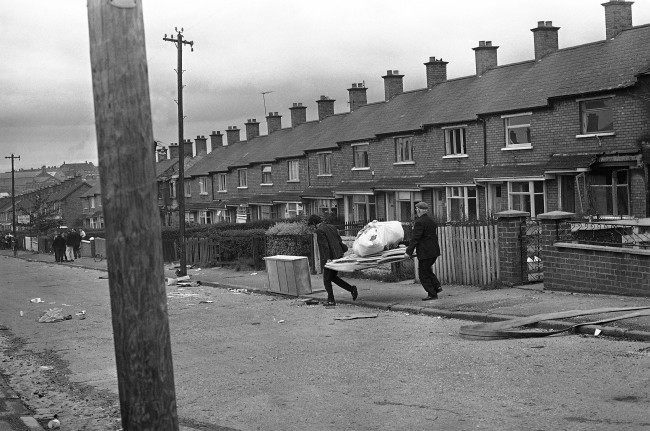
With the fear of being burnt out, Protestant householders move some of their belongings from a street in the Ardoyne area of Belfast, Northern Ireland on August 10, 1971.
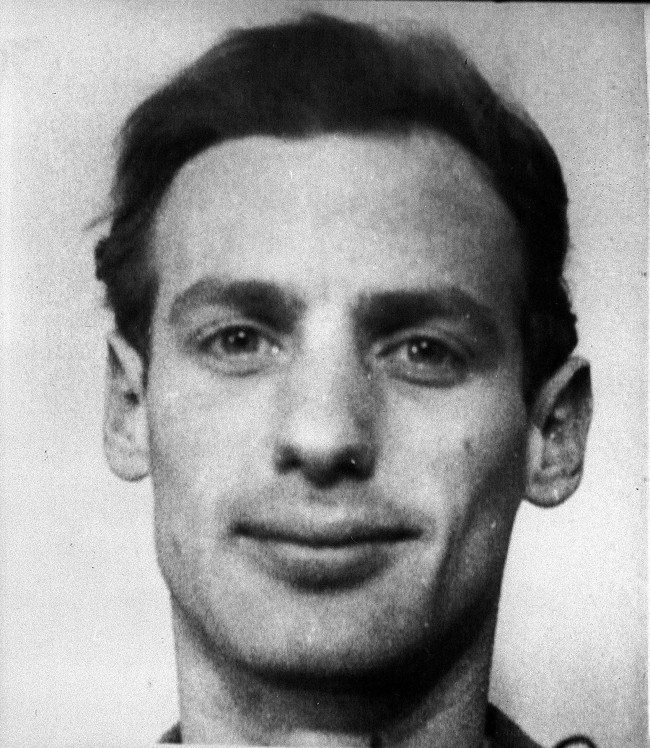
Photographs of the three British soldiers killed in an ambush in Ligoniel on the outskirts of Belfast. They are John McCraig 17 (L) his brother Joseph, 18 (R) and Dougald McCaughy,23.
Date: 11/03/1971

Photographs of the three British soldiers killed in an ambush in Ligoniel on the outskirts of Belfast. They are John McCraig 17 (L) his brother Joseph, 18 (R) and Dougald McCaughy,23.
Date: 11/03/1971

BELFAST IRA CLASHES – British troops straddle a main road near the Catholic Unity flats in Belfast, Northern Ireland, during a lull in the recent current wave of disorders which had flared up in a show of strength by a breakaway group of the Irish Republican Army earlier in the week. Club wielding republican extremists had forcefully halted traffic during the funerals of catholic riot victims. (AP-Photo/Peter Kemp) 02/11/1971
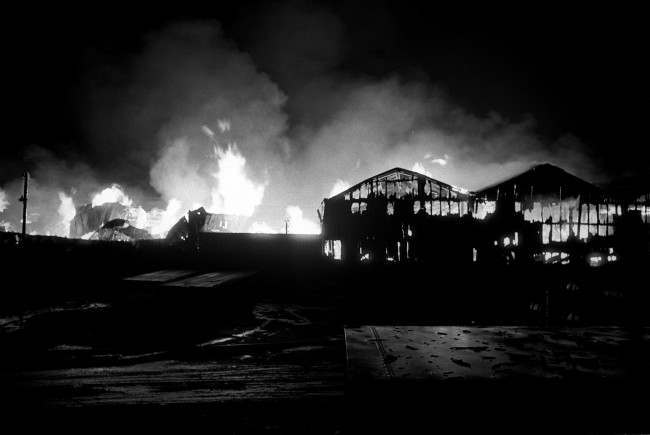
At the height of the blaze, flames leap from a 12-acre timber yard in Belfast’s dockland. The fire raged for three hours before it was brought under control.
Date: 10/02/1971
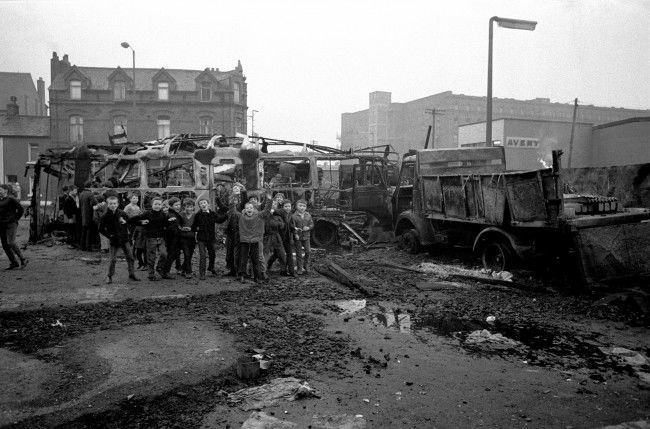
Schoolboys cheer adn chant from a pile of burnt-out busses and lorries in the aftermath of the riots.
Date: 09/02/1971
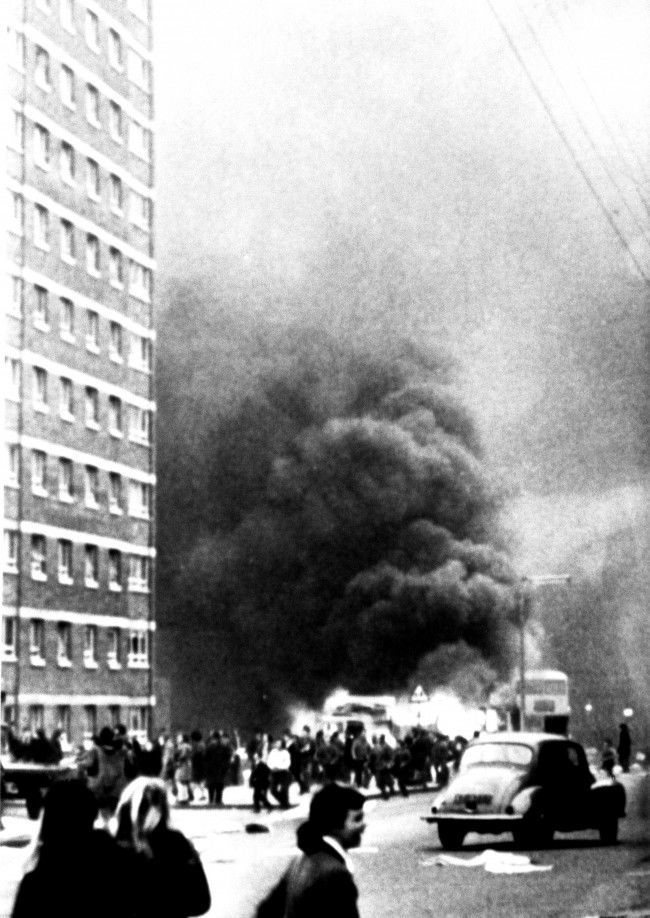
Vehicles burn in the New Lodge Road area of Belfast when a crowd of about 200 set fire to cars, vans and lorries after an army scout car ran over and killed a five-year-old girl.
Date: 08/02/1971
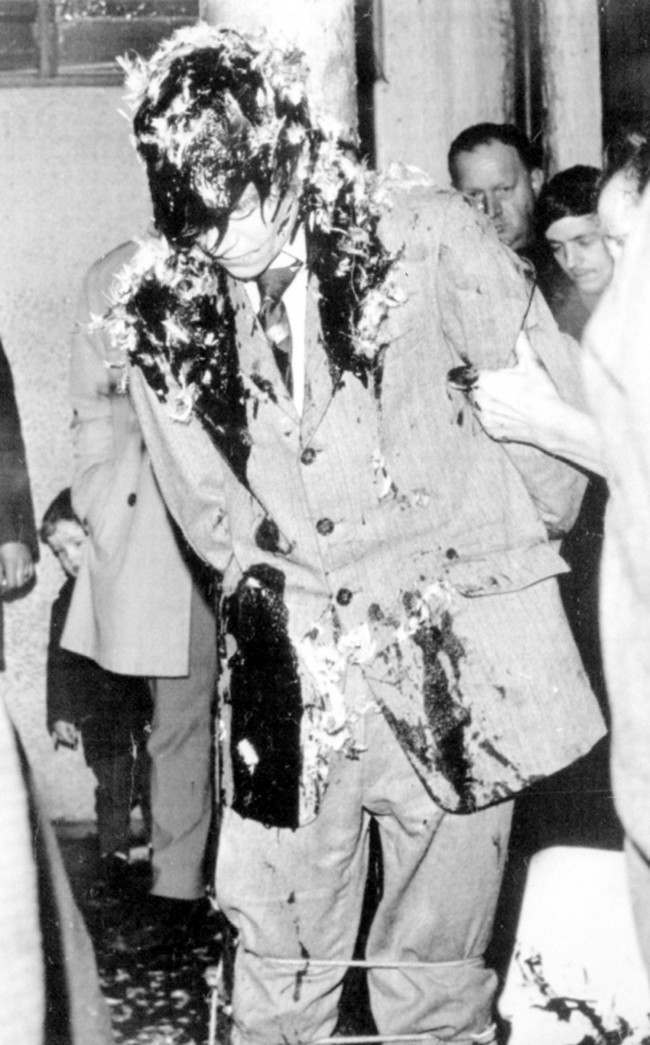
A youth tarred and feathered tied to a lamp post in the Falls Road area of Belfast. He is one of three who received such treatment in the past 24 hours.
Date: 10/01/1971

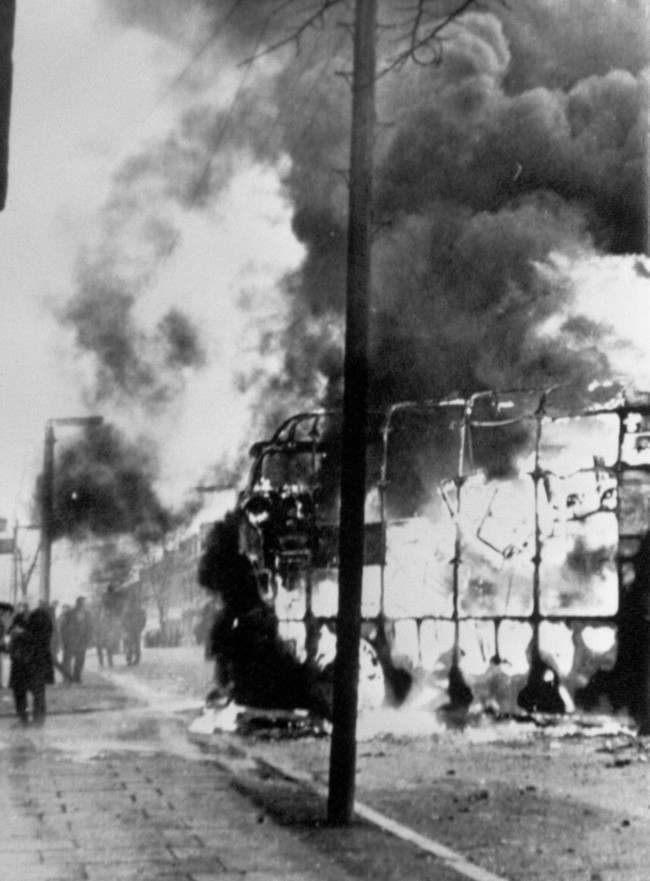
Flames leap into the air from a double decker bus when rioters used it as a blazing barricade in the Roman Catholic Falls Road area of Belfast. Violence broke out in Springfield Road after police and troops carried out an arms
Date: 03/02/1971
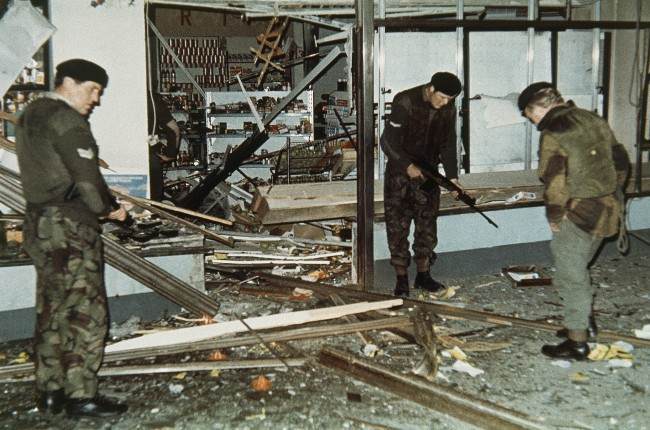
British troops sift through the ruins of a supermarket after a bomb exploded in Cavehill Road, Belfast, Northern Ireland in 1971.
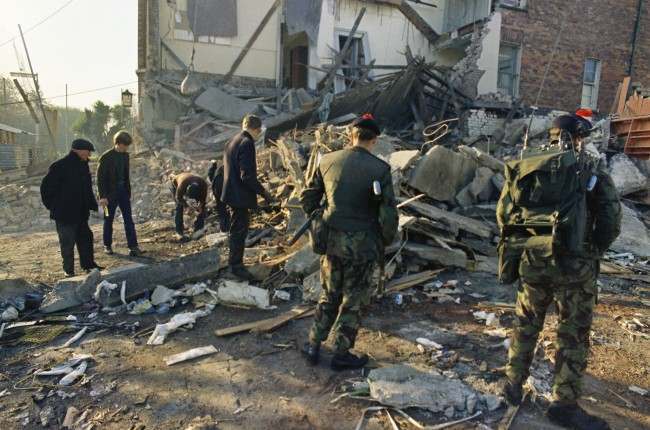
Devastation at a bomb damaged police station in Chichester Road, Belfast, Northern Ireland in November 1971, in which a police inspector died.
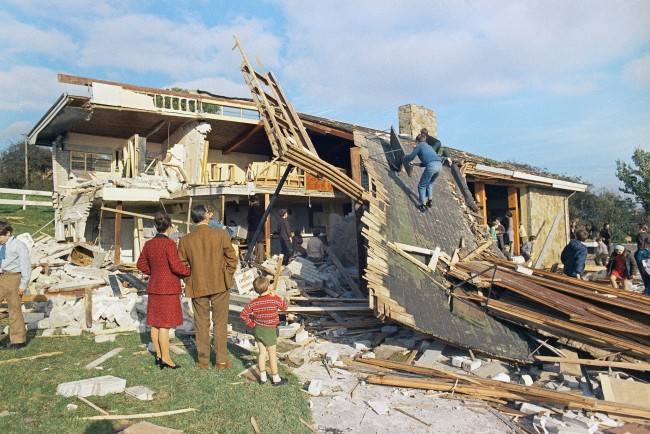
Wreckage left by a terrorist bombing at the Hunting Lodge Inn in Andersontown, Belfast, Northern Ireland in 1971.
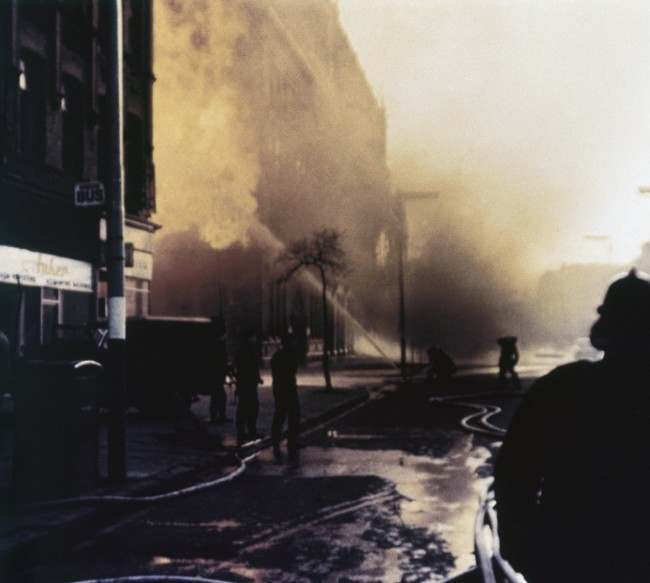
A factory building on fire in Belfast, Northern Ireland in 1971.
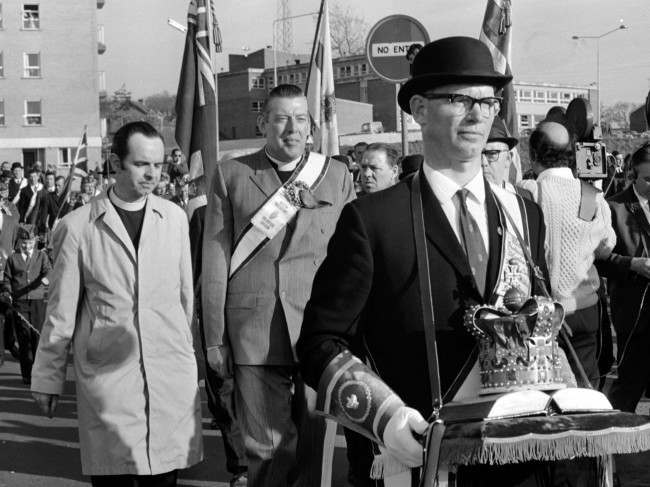
Protestant leader Reverend Ian Paisley, behind crown bearer, leads the Protestant Easter March through Armagh, Northern Ireland, while British troops stand guard on Easter Saturday, April 10, 1971.
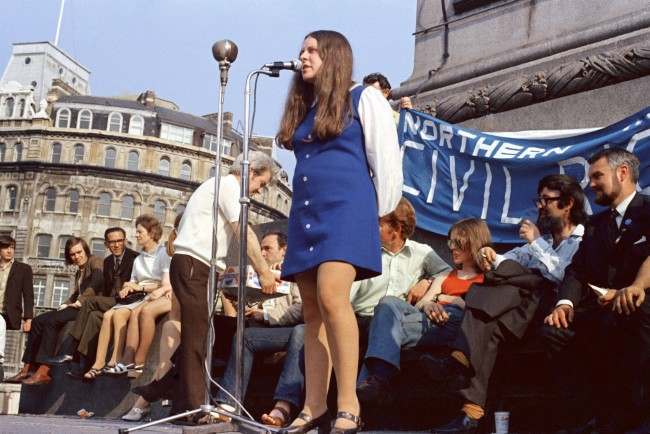
Bernadette Devlin, 24-year-old member of Parliament for Mid-Ulster, who has announced that she is soon to have a baby, addresses a political protest meeting in LondonÂs Trafalgar Square by the Northern Ireland Civil Rights Movement, July 11, 1971.

Brian Faulkner, Northern Ireland Prime Minister and the man faced with the task of ending the eruption of terrorism, street fighting and bloodshed in the Province
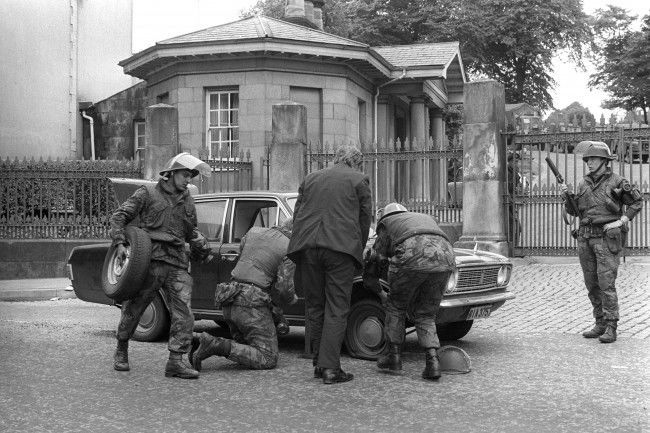
Soldiers changing a flat tyre on a car outside an Army base in Londonderry.
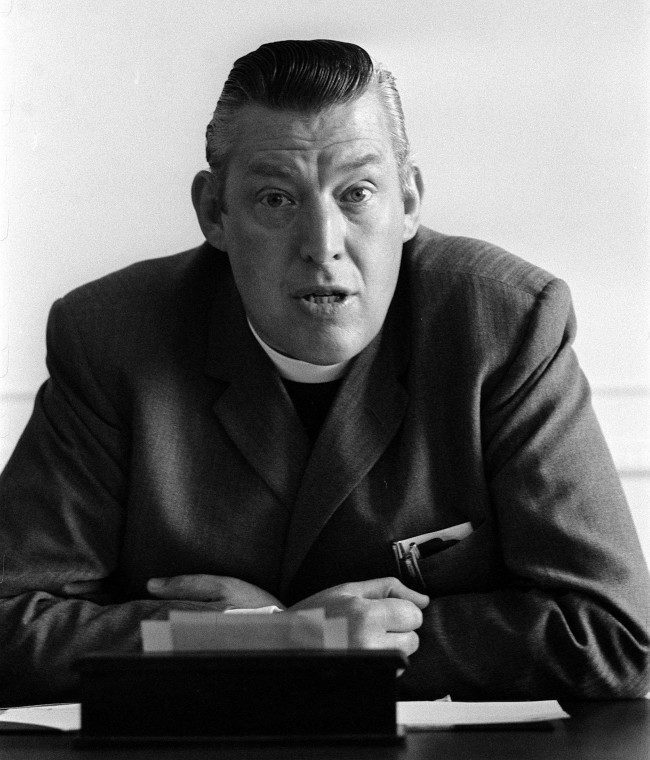
The Reverend Ian Paisley during a press conference in Stormont, Northern Ireland.
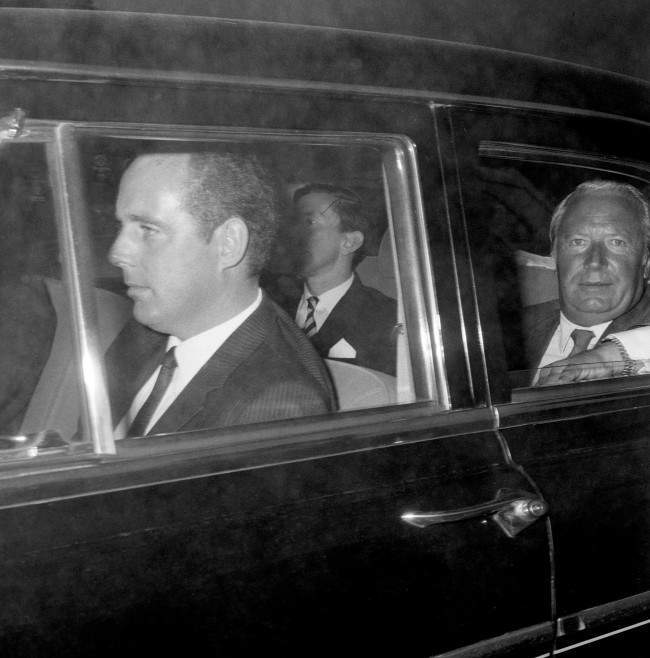
Prime Minister Edward Heath arriving at Chequers for a review of the Ulster situation.

Breaking away from her 48 hour vigil outside No. 10 Downing Street, Bernadette Devlin, Member of Parliament for Mid-Ulster, went to the London School of Economics, on Oct. 20, 1971, to demand that students take over some colleges and universities in Britain to show solidarity against the British Government’s handling of the Northern Ireland situation. Devlin rests waiting for her turn to address the students.
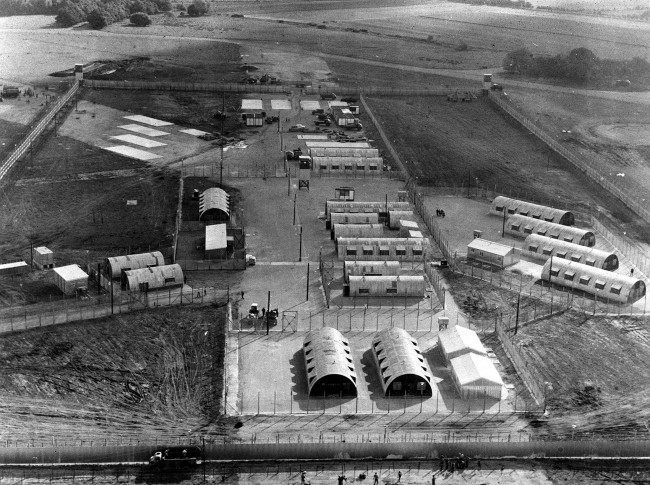
This former airfield is now the internment camp for IRA detainees. The hutments now have central heating and other modern amenities. The camp is called Long Kesh. The airfield was built 30 years ago and used by bombers taking off for Germany. *
Barrie Penrose reports on the Ulster Defence Regiment, a part-time auxiliary force of the British Army in Northern Ireland, as their role in Northern Ireland grows in significance. Denis Ormerod, the first Catholic commander of the UDR, comments on the religious make-up of the reservists and wider perceptions of the force.

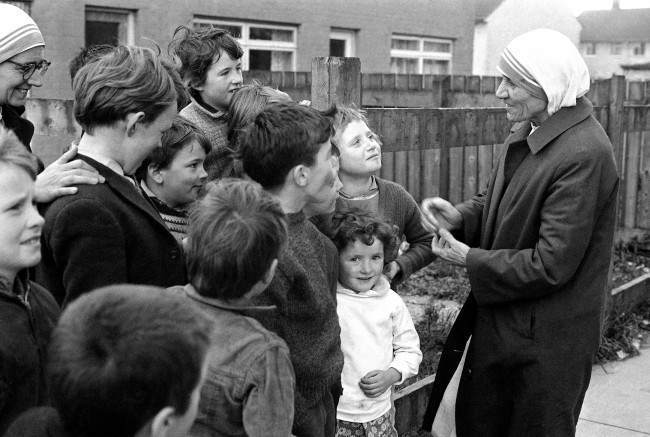
Mother Teresa making friends with Belfast children, where she is to start a mission in Belfast, Northern Ireland on Nov. 6, 1971.
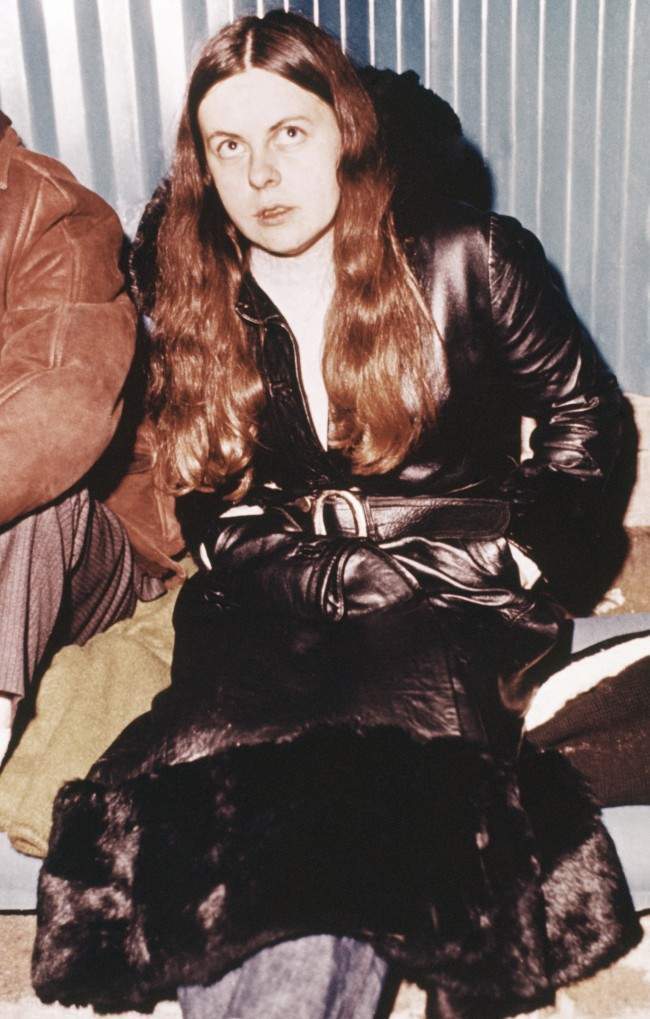
Bernadette Devlin, Member of Parliament for Mid-Ulster, during her all-night picked of Number Ten Downing Street, London on Oct. 20, 1971 at the start of her campaign to mobilize LondonÂs 250,000 Irish people to disrupt the capital. Irish workers, she said, would interfere with government until the demands of the people of Northern Ireland were granted.
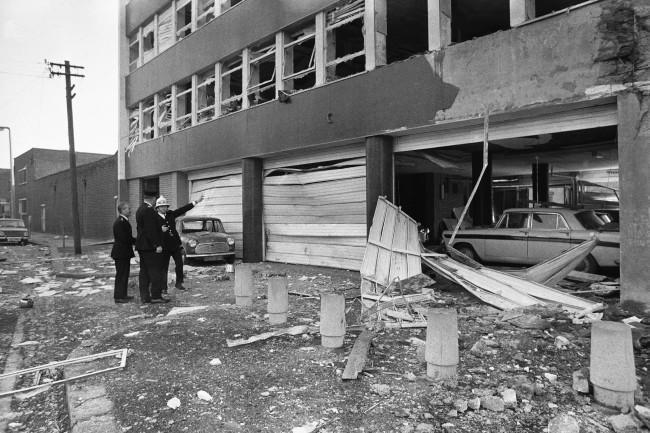
Security men examine the damage caused by a terrorist bomb detonated in the Youth Employment Office in Belfast, Northern Ireland on Nov. 2, 1971.
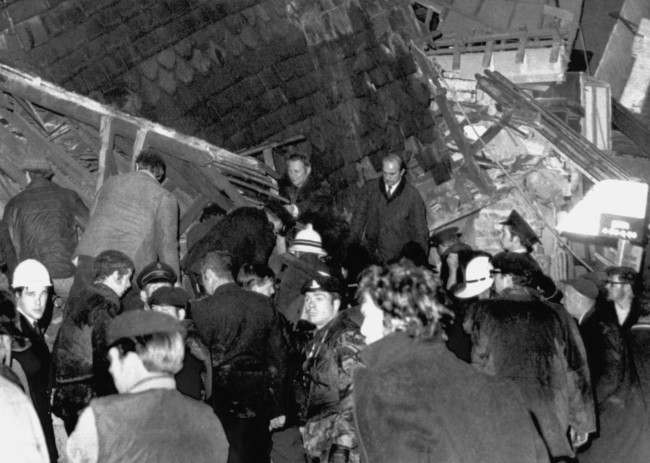
Rescuers search the wreckage of the Red Lion Bar in Belfast, Northern Ireland, where a terrorist bomb, killed two and injured over thirty persons on November 2, 1971.
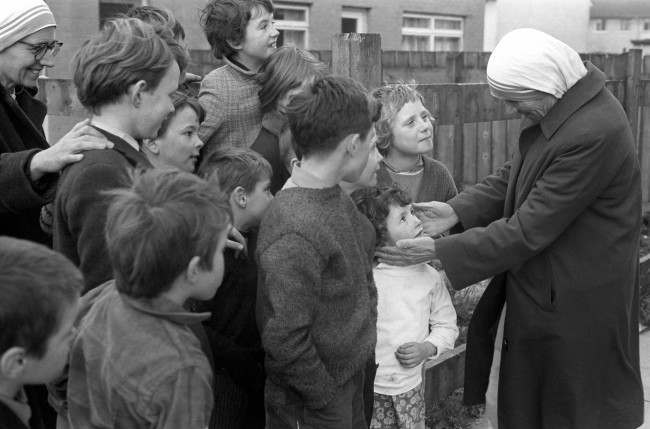
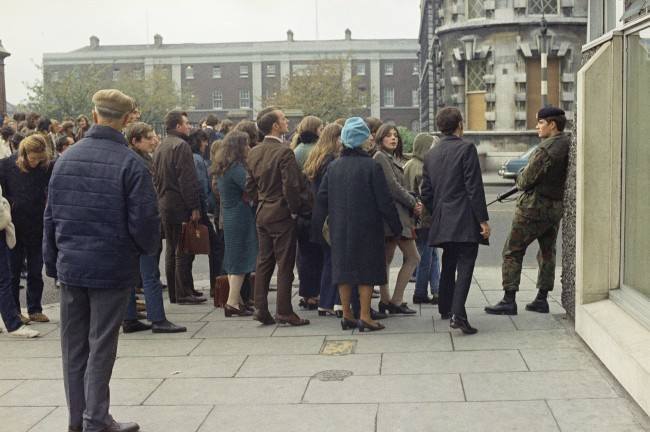
A British soldier stands guard as bystanders wait to get a view of operations by the army bomb disposal squad in Northern Ireland on Nov. 11, 1971 after an explosive device had been planted near the city centre.
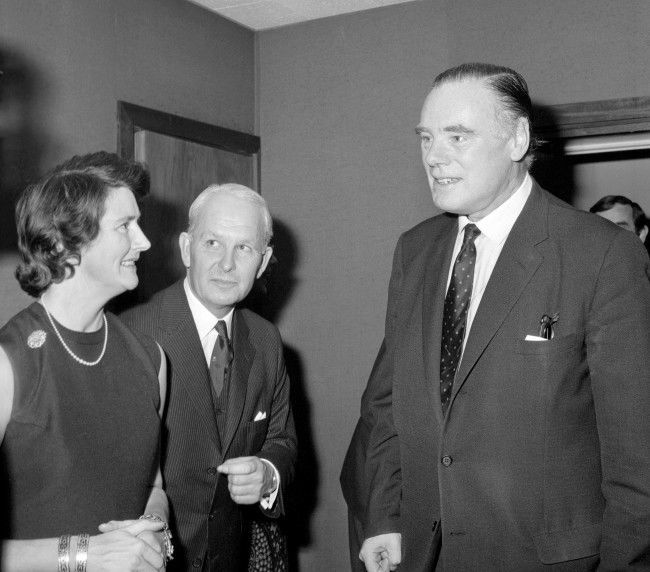
Prime Minister of Northern Ireland Brian Faulkner and his wife Lady Lucy Faulkner during a private reception at the Ulster office with Mr Reginald Maulding

The aftermath of the North Street Arcade in the city center of Belfast, Northern Ireland after it was hit by a bomb blast which wrecked eight shops, shown Nov. 6, 1971.
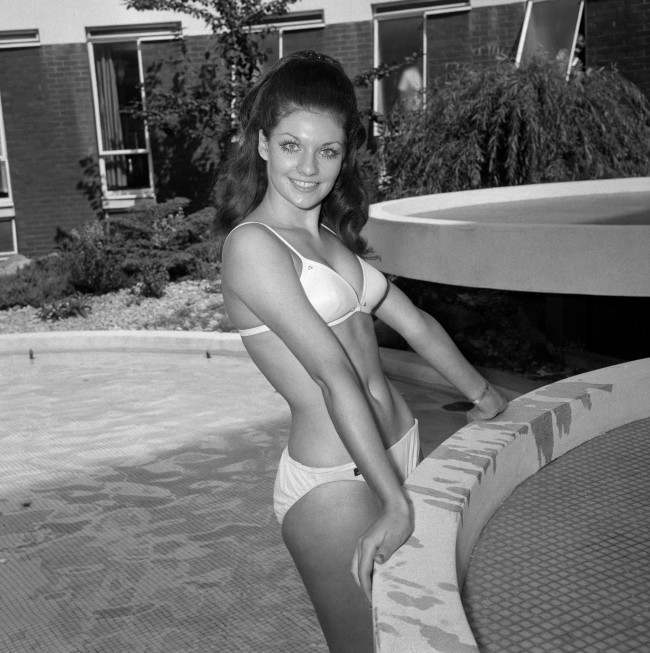
Because of the troubled situation, Belfast won’t be seeing the charms that won for Carolyn Moore, 19, the Miss Great Britain title. Heathrow’s Airport Ariel Hotel is luckier. Carolyn, from Nantwich Cheshire, is pictured here after flying from Manchester en route to an official weekend in the Channel Isles. But she learned today that the visit usually paid to Belfast by Miss Great Britain has been cancelled.
Date: 27/08/1971
Spotters: Belfast Telegraph, University of Ulster
Would you like to support Flashbak?
Please consider making a donation to our site. We don't want to rely on ads to bring you the best of visual culture. You can also support us by signing up to our Mailing List. And you can also follow us on Facebook, Instagram and Twitter. For great art and culture delivered to your door, visit our shop.






